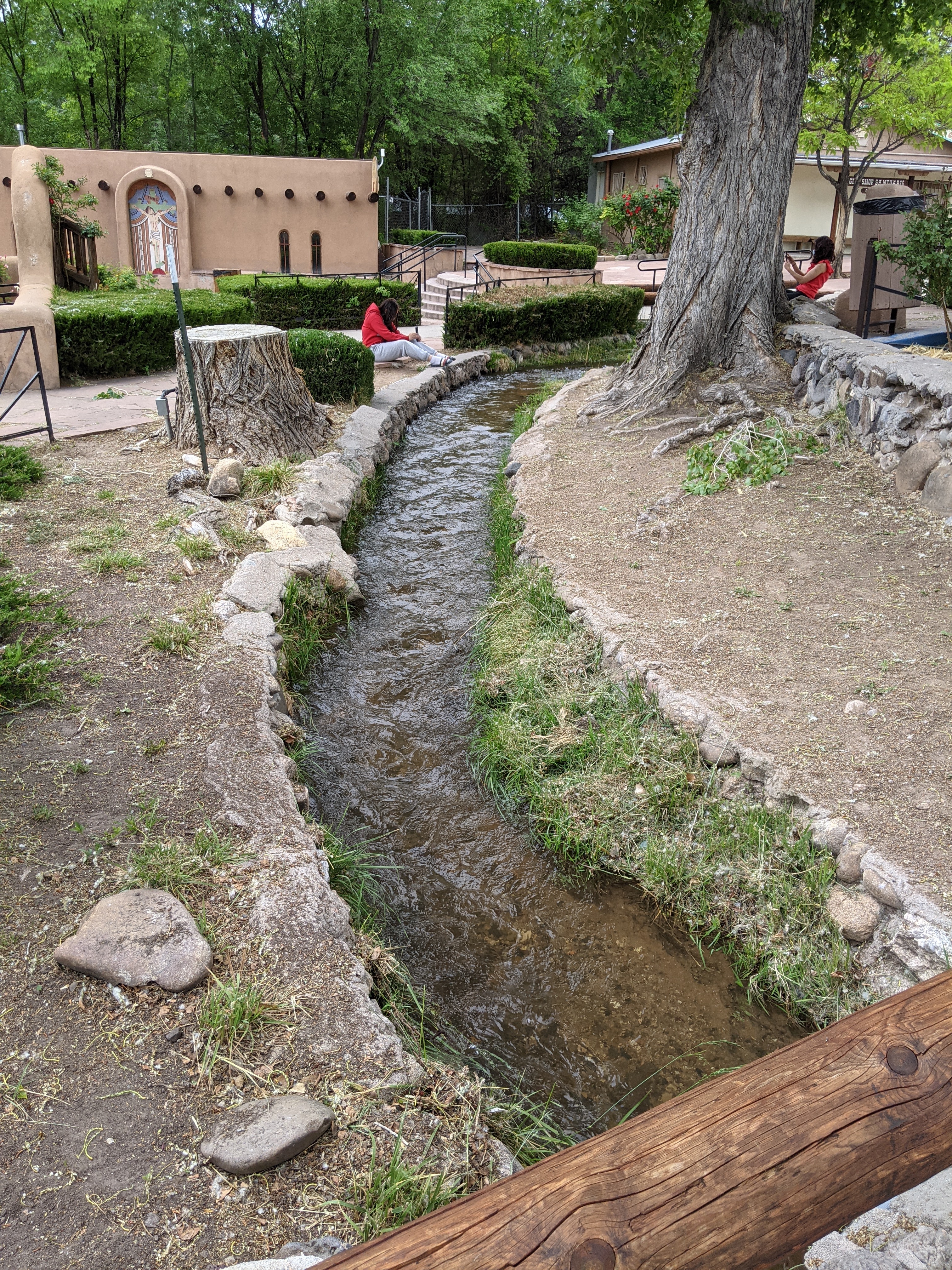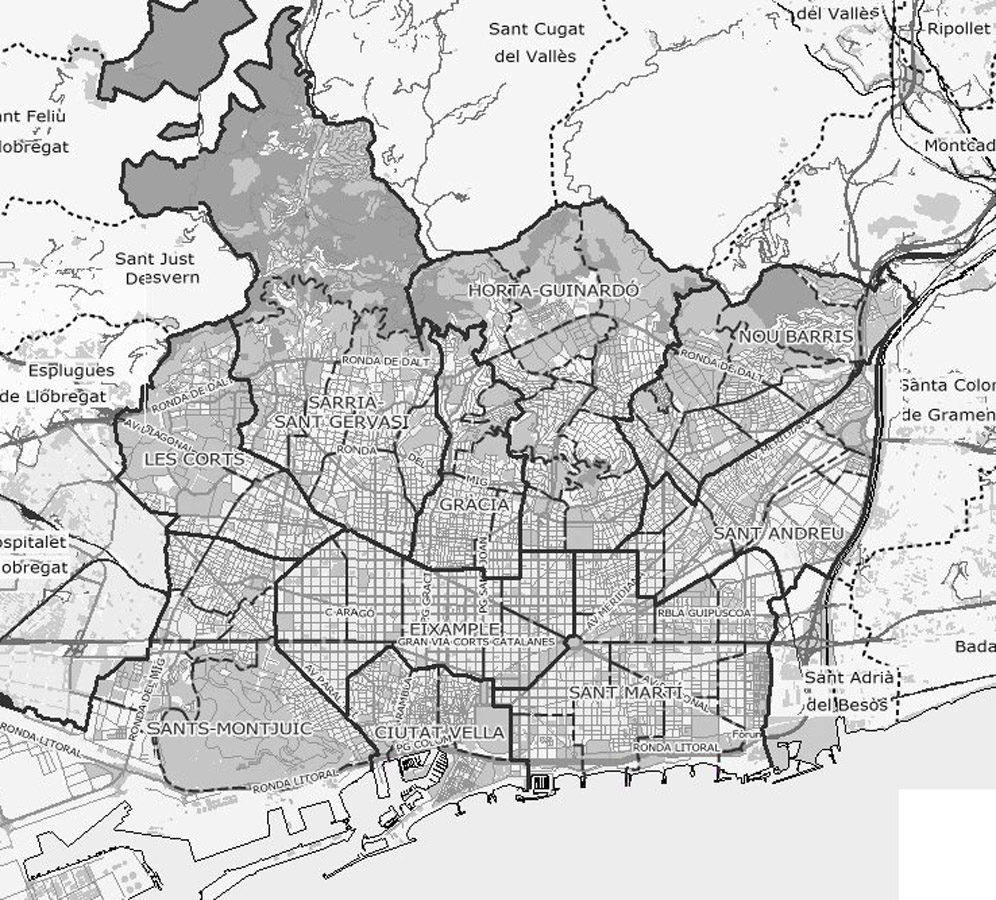|
Rec Comtal
The Rec Comtal was an irrigation canal near Barcelona, Catalonia, which took water from the Besòs river to the walls of the city. Construction was begun by Miro, Count of Barcelona in the 10th century, but it may date back to Roman times. It supplied water until the mid-20th century. In March 2016, extensive remains of structures associated with the system were discovered during excavations at Plaça de les Glòries Catalanes. See also * Urban planning of Barcelona The urban planning of Barcelona developed in accordance with the historical and territorial changes of the city, and in line with other defining factors of public space, such as architecture, urban infrastructure and the adaptation and maintenanc ... References Canals in Spain History of Barcelona {{Catalonia-struct-stub ... [...More Info...] [...Related Items...] OR: [Wikipedia] [Google] [Baidu] |
Irrigation Canal
An acequia () or séquia () is a community-operated watercourse used in Spain and former Spanish colonies in the Americas for irrigation. Particularly in Spain, the Andes, northern Mexico, and the modern-day American Southwest particularly northern New Mexico and southern Colorado, acequias are usually historically engineered canals that carry snow runoff or river water to distant fields. Examples of acequias in New Mexico have lengthy historical roots to Pueblo and Hispano communities, and they are incorporated into traditions including the matachines, life in the Rio Grande Bosque of the Albuquerque metropolitan area, and pilgrimages to El Santuario de Chimayo. The term can also refer to the long central pool in a Moorish garden, such as the Generalife in the Alhambra in Southern Iberia. Overview The Spanish word (and Catalan ) comes from Classical Arabic , which has the double meaning of 'the water conduit' or 'one that bears water' and the 'barmaid' (from , 'to ... [...More Info...] [...Related Items...] OR: [Wikipedia] [Google] [Baidu] |
Barcelona
Barcelona ( , , ) is a city on the coast of northeastern Spain. It is the capital and largest city of the autonomous community of Catalonia, as well as the second most populous municipality of Spain. With a population of 1.6 million within city limits,Barcelona: Población por municipios y sexo – Instituto Nacional de Estadística. (National Statistics Institute) its urban area extends to numerous neighbouring municipalities within the and is home to around 4.8 million people, making it the [...More Info...] [...Related Items...] OR: [Wikipedia] [Google] [Baidu] |
Besòs River
Besòs may refer to: * Besòs (river) The Besòs (; es, Besós, link=no) is a river flowing through Catalonia, Spain, formed by the confluence of the Mogent and Congost rivers. It ends in the Mediterranean. Its full watershed includes the following cities: Aiguafreda, La Garriga, ..., a river in Catalonia, Spain * Besòs (Barcelona Metro) {{dab ... [...More Info...] [...Related Items...] OR: [Wikipedia] [Google] [Baidu] |
Miro, Count Of Barcelona
Miro, Count of Barcelona (died Barcelona, 966) was count of Barcelona, Gerona and Osona from 947 to 966. He was the son of Sunyer, Count of Barcelona and his second wife, Riquilda. When his father stood down in 947 he became governor jointly with his brother Borrell II, Count of Barcelona. Borrell took charge of military and foreign affairs and Miro took charge of domestic affairs. Miro made donations to the monasteries of San Cugat del Vallès, Sant Joan de las Abadeses i Ripoll, and during his reign it is believed that he began construction of the Rec Comtal, which took water to Barcelona. See also * Count of Barcelona * Catalan counties The Catalan counties ( ca, Comtats Catalans, ) were the administrative Christian divisions of the eastern Carolingian ''Hispanic Marches'' and the southernmost part of the Septimania, March of Gothia in the Pyrenees created after their rapid conqu ... Counts of Barcelona 966 deaths Year of birth unknown 10th-century people from the Cou ... [...More Info...] [...Related Items...] OR: [Wikipedia] [Google] [Baidu] |
Roman Empire
The Roman Empire ( la, Imperium Romanum ; grc-gre, Βασιλεία τῶν Ῥωμαίων, Basileía tôn Rhōmaíōn) was the post-Republican period of ancient Rome. As a polity, it included large territorial holdings around the Mediterranean Sea in Europe, North Africa, and Western Asia, and was ruled by emperors. From the accession of Caesar Augustus as the first Roman emperor to the military anarchy of the 3rd century, it was a Principate with Italia as the metropole of its provinces and the city of Rome as its sole capital. The Empire was later ruled by multiple emperors who shared control over the Western Roman Empire and the Eastern Roman Empire. The city of Rome remained the nominal capital of both parts until AD 476 when the imperial insignia were sent to Constantinople following the capture of the Western capital of Ravenna by the Germanic barbarians. The adoption of Christianity as the state church of the Roman Empire in AD 380 and the fall of the Western ... [...More Info...] [...Related Items...] OR: [Wikipedia] [Google] [Baidu] |
Plaça De Les Glòries Catalanes
Plaça de les Glòries Catalanes (), most often shortened to Glòries, is a large square in Barcelona, first designed by Ildefons Cerdà to serve as the city centre in his original urban plan (''Pla Cerdà''), but nowadays relegated to quite a secondary position. It is located in the Sant Martí district, bordering Eixample, at the junction of three of the city's most important thoroughfares: Avinguda Diagonal, Avinguda Meridiana and Gran Via de les Corts Catalanes. Currently it serves largely as a roundabout of elevated highways. However, beginning in the early 2000s, and as of 2007, revamping project for Glòries has started, which is aimed to give the square a new role in Barcelona and revitalize the northern districts of the city, under the name 22@. These plans supplement other large-scale plans in Sagrera and the Fòrum area. The first installment of this project was the construction of the controversial Torre Agbar skyscraper. History Plaça de les Glòries, which was t ... [...More Info...] [...Related Items...] OR: [Wikipedia] [Google] [Baidu] |
La Vanguardia
' (; , Spanish for "The Vanguard") is a Spanish daily newspaper, founded in 1881. It is printed in Spanish and, since 3 May 2011, also in Catalan (Spanish copy is automatically translated into Catalan). It has its headquarters in Barcelona and is Catalonia's leading newspaper. Despite being mostly distributed in Catalonia, ' has Spain's fourth-highest circulation among general-interest newspapers, trailing only the three main Madrid dailies – ', ' and ''ABC'', all of which are national newspapers with offices and local editions throughout the country. Its editorial line leans to the centre of politics and is moderate in its opinions, although in Francoist Spain it followed Francoist ideology and to this day has Catholic sensibilities and strong ties to the Spanish nobility through the Godó family. History and profile ''La Vanguardia'''s newspaper history began in Barcelona on 1 February 1881 when two businessmen from Igualada, Carlos and Bartolomé Godó, first published th ... [...More Info...] [...Related Items...] OR: [Wikipedia] [Google] [Baidu] |
Urban Planning Of Barcelona
The urban planning of Barcelona developed in accordance with the historical and territorial changes of the city, and in line with other defining factors of public space, such as architecture, urban infrastructure and the adaptation and maintenance of natural spaces, parks and gardens. The urban evolution of Barcelona has been constant since its foundation in Roman times to the present day, although since the nineteenth century it has been accentuated thanks to the ''Eixample'' plan and the aggregation of neighboring municipalities. Until the nineteenth century the city was constrained by its medieval walls as it was considered a military square, so its growth was limited. The situation changed with the demolition of the walls and the donation to the city of the fortress of the Citadel, which led to the expansion of the city across the adjacent plain, a fact that was reflected in the Eixample project drawn up by Ildefons Cerdà, which was the largest territorial expansion of Barcel ... [...More Info...] [...Related Items...] OR: [Wikipedia] [Google] [Baidu] |
Canals In Spain
Canals or artificial waterways are waterways or engineered channels built for drainage management (e.g. flood control and irrigation) or for conveyancing water transport vehicles (e.g. water taxi). They carry free, calm surface flow under atmospheric pressure, and can be thought of as artificial rivers. In most cases, a canal has a series of dams and locks that create reservoirs of low speed current flow. These reservoirs are referred to as ''slack water levels'', often just called ''levels''. A canal can be called a ''navigation canal'' when it parallels a natural river and shares part of the latter's discharges and drainage basin, and leverages its resources by building dams and locks to increase and lengthen its stretches of slack water levels while staying in its valley. A canal can cut across a drainage divide atop a ridge, generally requiring an external water source above the highest elevation. The best-known example of such a canal is the Panama Canal. Many ca ... [...More Info...] [...Related Items...] OR: [Wikipedia] [Google] [Baidu] |





